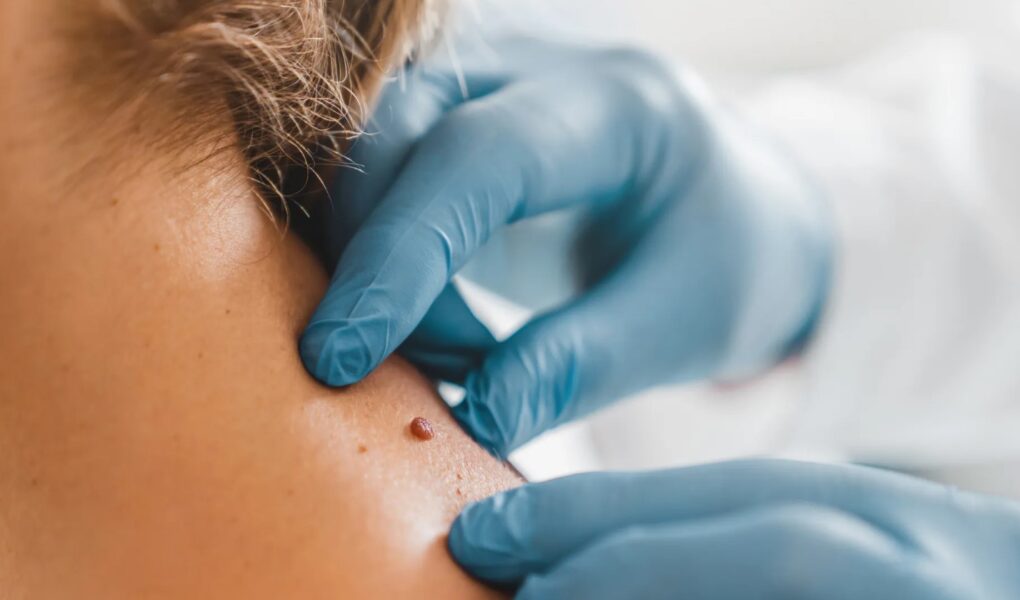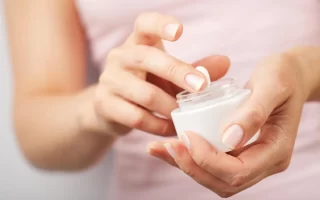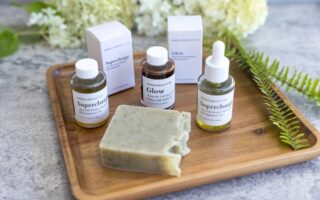Dealing with skin tags can be quite frustrating, especially when they appear in noticeable areas. If you’re someone who has experienced this, you know how bothersome they can be. But worry not, because I’m here to help you.
In this guide, I’ll share effective and natural methods to remove skin tags at home. We’ll explore remedies such as apple cider vinegar, tea tree oil, and even toothpaste. As many skincare enthusiasts suggest, removing skin tags is possible, but it should be approached with caution.
Additionally, I’ll provide information on professional options like excision and cryosurgery. It’s important to note the risks involved, as well as the necessary aftercare. Remember, seeking professional evaluation is always a wise choice when needed.
Home Remedies for Skin Tag Removal
Table of Contents
To remove skin tags naturally at home, I found success with a few home remedies. There are some precautions to keep in mind when using natural remedies for skin tag removal. First, it’s important to ensure that the skin tag is indeed a skin tag and not another type of skin condition. If there’s any doubt, it’s best to have it examined by a healthcare professional.
Additionally, delicate areas such as the eyelids or genital area should be treated by a healthcare practitioner to avoid any complications or injuries.
Now, let’s talk about the natural remedies that I’ve personally found effective. Apple cider vinegar is one option that many people swear by. Simply soak a cotton swab in diluted apple cider vinegar and apply it to the skin tag. Tea tree oil is another popular choice.
Dilute it in a carrier oil and apply it directly to the tag. Toothpaste and skin tag patches are also worth trying.
However, it’s important to note that while these remedies may work for some, they may not work for everyone. It’s always a good idea to proceed with caution and consult with a healthcare professional if you have any concerns or if the skin tag shows any signs of abnormality.
In the next section, we’ll explore the potential risks and concerns associated with home remedies for skin tag removal.
Potential Risks and Concerns With Home Remedies
Continuing from my previous discussion on home remedies for skin tag removal, it’s important to be aware of the potential risks and concerns associated with these methods. While home remedies can be convenient and cost-effective, they may not always be suitable for everyone.
One of the major risks is the lack of proper evaluation by a professional. Skin tags should be carefully examined by a healthcare provider to ensure they aren’t mistaken for other skin conditions or moles that may require further evaluation or biopsy.
Using nail clippers or sharp instruments at home to remove skin tags can also be risky. These methods can cause bleeding, infection, and scarring if not done properly. It’s crucial to understand that delicate areas, such as near the eyes or genitals, require the expertise of a healthcare practitioner for safe and effective removal.
Additionally, there are warning signs that indicate the need for professional evaluation. If a skin tag changes in size, color, or shape, or if it becomes painful or starts bleeding, it’s important to seek medical attention. These changes may indicate a more serious underlying condition that requires proper diagnosis and treatment.
Understanding the potential risks and concerns with home remedies emphasizes the importance of considering professional methods for skin tag removal.
Professional Methods for Skin Tag Removal
Now let’s explore the professional methods for skin tag removal.
There are both surgical and non-surgical options available, each with their own pros and cons.
Surgical methods include excision, cauterization, and cryosurgery, while non-surgical methods may involve the use of freezing kits.
The cost and insurance coverage for these procedures can vary, so it’s important to consult with a healthcare professional to determine the best course of action for your specific situation.
Surgical Vs. Non-Surgical
I prefer non-surgical methods for skin tag removal, but it’s important to understand the differences between surgical and non-surgical options. Let’s compare the effectiveness and recovery time of these two approaches:
| Surgical | Non-Surgical |
|---|---|
| More effective in removing larger and more stubborn skin tags | Effective for smaller and less stubborn skin tags |
| Usually requires local anesthesia and may cause scarring | Generally painless with minimal scarring |
| Immediate removal with little to no downtime | May take longer to see results, but no downtime necessary |
Surgical methods, such as excision or cauterization, are more effective for larger and stubborn skin tags. However, they may require local anesthesia and can potentially leave scars. On the other hand, non-surgical methods like using home remedies or over-the-counter products are generally painless and have minimal scarring. While they may take longer to see results, there is no downtime involved.
Ultimately, the choice between surgical and non-surgical methods depends on the size and stubbornness of the skin tag, as well as personal preferences regarding pain and scarring.
Pros and Cons
Moving forward, let’s explore the advantages and disadvantages of professional methods for skin tag removal.
When considering professional methods, it’s important to weigh the effectiveness versus safety and the natural versus chemical approaches.
Professional methods such as excision, cauterization, and cryosurgery are highly effective in removing skin tags. These procedures are performed by trained healthcare practitioners who can accurately diagnose and distinguish skin tags from other lesions. They can also minimize scarring, bleeding, and infection risks associated with removal.
However, it’s important to note that these methods involve the use of chemicals or heat, which may cause discomfort or irritation.
Considering the pros and cons of professional methods, the next section will delve into the cost and insurance coverage for skin tag removal.
Cost and Insurance Coverage?
To understand the cost and insurance coverage for professional methods of skin tag removal, it’s important to consider the financial aspect and potential reimbursement provided by health insurance plans.
The cost of professional skin tag removal can vary depending on the method used and the healthcare provider. Some common methods include excision, cauterization, and cryosurgery.
Insurance coverage for skin tag removal may vary depending on the policy and the medical necessity of the procedure. It’s advised to check with your insurance provider to determine if skin tag removal is covered and what cost considerations you may need to take into account.
Understanding your insurance coverage can help you make an informed decision about the most suitable method for your needs.
Now, let’s move on to discussing aftercare tips for skin tag removal.
Aftercare Tips for Skin Tag Removal
Aftercare is an essential part of skin tag removal to ensure proper healing and minimize the risk of infection.
To avoid infection, it’s important to keep the area clean and dry, applying antibiotic ointment and bandaging as needed.
Additionally, scar prevention techniques such as avoiding products that can slow healing should be followed to promote optimal results.
Avoiding Infection After Removal
One of the most important aspects of aftercare for skin tag removal is ensuring proper hygiene to prevent infection. Here are some tips to help you avoid infection after removing skin tags:
- Clean the area gently with mild soap and water daily.
- Apply an over-the-counter antibiotic ointment to the wound.
- Cover the area with a sterile bandage to protect it from dirt and bacteria.
- Avoid picking or scratching the wound to prevent further irritation or infection.
By following these aftercare tips, you can promote healing and reduce the risk of infection.
Remember to consult with a healthcare professional if you experience any signs of infection, such as increased redness, swelling, pain, or discharge. Taking care of your skin properly after removing skin tags is crucial for preventing complications and ensuring a smooth recovery.
Scar Prevention Techniques
I recommend applying silicone gel or sheets to the area after removing a skin tag to help prevent scarring. Silicone has been shown to be effective in reducing scar formation by providing a protective barrier and promoting hydration of the skin. It helps to flatten and fade scars over time.
Additionally, using natural remedies for scar healing can also aid in preventing excessive scarring. Some natural remedies include aloe vera gel, which has anti-inflammatory properties and can soothe the skin, and vitamin E oil, which can help moisturize and promote healing.
It’s important to keep the area clean and dry, and avoid picking or scratching at the healing skin. Following these scar prevention techniques can help minimize the appearance of scars after skin tag removal.
Causes and Prevention of Skin Tags
By examining the causes and prevention of skin tags, it becomes evident that they’re often linked to friction and skin rubbing against skin. Other factors, such as hormonal changes and hereditary nature, can also contribute to the development of skin tags.
To evoke an emotional response, consider the following:
- The discomfort and irritation caused by skin tags can affect one’s confidence and self-esteem.
- The hereditary nature of skin tags may lead to feelings of frustration and helplessness.
- Hormonal factors, such as those experienced during pregnancy, can be distressing for individuals dealing with skin tags.
- The potential association between insulin resistance and skin tags may cause anxiety and concern about overall health.
To prevent skin tags, maintaining a healthy weight and avoiding excessive friction are important. Keeping the skin clean and dry can also minimize the risk of skin tag formation. Regularly examining the skin for new growths or changes and seeking evaluation from a dermatologist can help identify and potentially remove skin tags.
Importance of Professional Evaluation
To what extent is it crucial to seek professional evaluation for skin tag removal?
When it comes to removing skin tags, seeking professional evaluation is highly important. While home remedies and over-the-counter products may seem convenient, they may not always provide accurate diagnosis or the necessary expertise to deal with certain situations.
Professional evaluation offers several benefits. Firstly, it ensures accurate diagnosis and distinguishes skin tags from other lesions that may require different treatments. This helps prevent any potential harm or complications.
Secondly, professional removal methods minimize the risks of scarring, bleeding, and infection. Delicate areas, such as the eyelids or genitals, require the expertise of a healthcare practitioner to avoid any damage. Furthermore, professional evaluation allows for the removal of bothersome skin tags in delicate areas, ensuring both safety and effectiveness.
Lastly, seeking professional evaluation may also be important for insurance coverage, especially if the removal of skin tags is affecting one’s physical or mental health. In general, it’s advisable to seek medical attention for skin tags that resemble other skin conditions or if there are any warning signs. Consulting a dermatologist or healthcare provider for an in-person visual exam or through telehealth options is recommended to ensure proper evaluation and appropriate treatment.
Frequently Asked Questions
Are There Any Natural Remedies for Skin Tag Removal That Are Safe to Use on Delicate Areas?
Yes, there are natural remedies for removing skin tags that are safe to use on delicate areas. Some options include apple cider vinegar, tea tree oil, toothpaste, skin tag patches, and freezing kits.
What Are the Warning Signs That Indicate a Skin Tag Should Be Evaluated by a Healthcare Provider?
When should a healthcare provider evaluate a skin tag? What are the warning signs of a skin tag that needs medical attention? If a skin tag becomes painful, bleeds, changes color, or grows rapidly, it should be evaluated by a healthcare provider.
Can Using Nail Clippers or Sharp Instruments at Home for Skin Tag Removal Lead to Complications?
Yes, using nail clippers or sharp instruments at home for skin tag removal can lead to complications such as bleeding, infection, and scarring. It’s safer to consider alternative methods like over-the-counter products or professional evaluation for removal.
Are There Any Creams or Ointments That Should Be Avoided Due to the Risk of Skin Inflammation?
There are certain creams or ointments that should be avoided for skin tag removal due to the risk of skin inflammation. It’s important to consider natural remedies for delicate areas to minimize any potential complications.
How Effective Are Professional Methods of Skin Tag Removal Compared to Home Remedies?
Professional methods of skin tag removal, such as excision, cauterization, and cryosurgery, are highly effective compared to home remedies. They offer benefits like accurate diagnosis, minimal scarring, and reduced infection risks.
Conclusion
When it comes to removing skin tags naturally at home, it’s important to approach the process safely and with proper knowledge. While there are effective home remedies, it’s crucial to understand the risks involved and seek professional evaluation in certain cases.
Additionally, following aftercare tips is essential to promote healing and reduce the risk of complications.
By understanding the causes and prevention of skin tags, you can take proactive steps to minimize their occurrence and maintain healthy skin.



